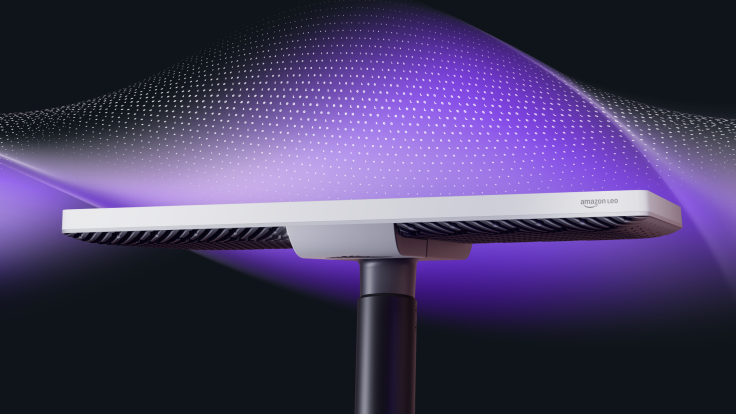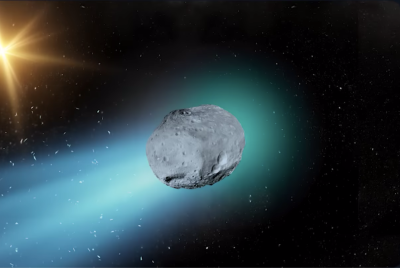Amazon Leo Declares War On SpaceX's Two-Thirds Satellite Dominance
Amazon has renamed its satellite internet service Amazon Leo and opened an enterprise preview programme that marks a major step in its fight to compete with SpaceX Starlink.

Amazon has officially rebranded its satellite internet service as Amazon Leo and begun allowing businesses to test it, in a direct challenge to SpaceX's Starlink, which currently dominates the market with nearly 9,000 satellites orbiting Earth and more than 5 million customers worldwide.
The newly christened Amazon Leo, formerly known as Project Kuiper, launched its enterprise preview programme on Monday, marking a significant escalation in the battle for global internet connectivity. The name references low Earth orbit, the region within 1,200 miles of Earth's surface where Amazon's satellite constellation will operate.
The David and Goliath Match-Up
The statistics tell a stark story of the challenge Amazon faces. SpaceX operates roughly 7,050 active satellites in low Earth orbit, accounting for approximately two-thirds of all active satellites circling the planet. When the first Starlink satellites launched in May 2019, there were barely 2,000 active satellites in space. Today, there are more than 11,000, with most belonging to Musk's operation.
By contrast, Amazon has launched just over 150 satellites since April through a series of rocket launches handled by partners including United Launch Alliance and, ironically, SpaceX itself.
Pumped to introduce the production version of our @AmazonLeo Ultra antenna. Built to deliver secure, reliable connectivity for companies operating in remote areas.
— Panos Panay (@panos_panay) November 24, 2025
There’s so much invention packed into this final design, from the phased array architecture to the custom silicon,… pic.twitter.com/1oXNClmM2e
Yet Amazon's $10 billion (£7.8 billion) investment suggests the company is playing the long game. The tech giant plans to deploy 3,236 satellites into orbits between 590 and 630 kilometres above Earth, slightly higher than Starlink's 550-kilometre altitude. Full deployment is targeted for 2026, with limited commercial service expected to begin in late 2025 or the first quarter of 2026.
Three Terminals, One Mission
Amazon has unveiled three customer terminals for the service. The Amazon Leo Nano is the entry-level option, whilst the Amazon Leo Pro targets residential and small-business users. The Amazon Leo Ultra is designed for commercial applications requiring higher performance.
Excited to share new @Amazonleo Ultra is fastest satellite internet antenna ever built, delivering simultaneous download speeds up to 1 Gbps and upload speeds up to 400 Mbps, all powered by custom Leo silicon.
— Andy Jassy (@ajassy) November 24, 2025
Plus some more details on our network, which will offer… pic.twitter.com/FOE7pRgyH9
The company claims Leo will offer speeds up to 400 megabits per second for most consumers when fully deployed in 2029, approximately twice the average US broadband speed. That would represent a significant advantage over current Starlink residential plans, which typically deliver around 300 megabits per second, though business customers can achieve 350 megabits per second.
Critically, Amazon's pricing strategy remains under wraps, but the company has historically positioned the hardware as more affordable than Starlink's offerings. Early reports suggested Amazon's portable receiver would sell for just $100 (£78), compared to Starlink's $349 (£272) dish, though these figures may have evolved as the project has matured.
The Technology Behind the Challenge
Amazon Leo will use Ka-band antennas, which transmit and receive high-frequency radio waves offering higher data throughput and greater bandwidth capacity than older systems. The satellites are equipped with optical inter-satellite link technology, using infrared lasers to send data between spacecraft at speeds of 100 gigabits per second.
Direct to AWS and Private Network Interconnect will enable businesses to easily connect to their network and cloud infrastructure without touching the public internet. pic.twitter.com/s9V35K2mD6
— Amazon Leo (@Amazonleo) November 24, 2025
This laser communication system proved crucial during prototype testing in 2023. Maintaining such links between satellites moving at speeds up to 15,000 mph across distances of 1,600 miles represented a significant technical challenge, but Amazon claims its optics and control systems have overcome these obstacles.
The deeper integration with Amazon Web Services offers a potentially unique advantage for enterprise customers. Kuiper satellites can route data directly into the AWS cloud, enabling edge computing and low-latency cloud services from nearly any location on Earth. For businesses relying on cloud infrastructure, this seamless connection could prove compelling.
© Copyright IBTimes 2025. All rights reserved.





















